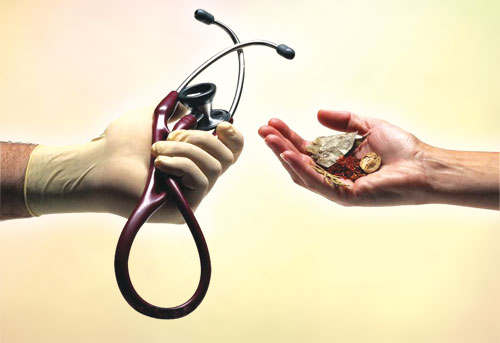Most people try to avoid surgery or aggressive treatment if possible. Conservative care, which may include physical therapy, occupational therapy, exercise therapy, nutritional counseling, chiropractic, talk therapy, home management and over-the-counter medications, offers less invasive options and may be beneficial as a starting point or in conjunction with more aggressive treatment plans.
Conservative care is appropriate when symptoms initially appear. It may also be considered as a later option when more invasive treatments fail to bring relief. Such intervention may modify symptoms and help the body heal properly.
When symptoms first appear, a practitioner should ascertain if the patient’s condition indicates a “red flag,” which may determine whether emergency hospital transport is necessary or whether treatment is contraindicated prior to further evaluation(s). A red flag does not necessarily indicate halting treatment but may call for ordering further evaluations (X-Rays, MRIs, primary, neurologic, or orthopedic evaluations, etc.). Examples of red flags include auto accidents, falls and other types of trauma with possible fractures, sprains, strains, confusing symptomatology, arm or leg numbness, tingling, pain, weakness, and or loss of control. Neurologic or internal disorder symptoms may range from minor to severe. It may be appropriate to seek evaluation from a specialist or an emergency facility.
If no red flags surface, home care such as over-the-counter medications, ice and wet heat, massage (always toward the heart), exercises, rest, and or modified activities may suffice. However, if the condition persists for more than a few days, the patient should seek professional evaluation from a qualified facility or individual such as a medical doctor, doctor of chiropractic, urgent care or emergency room.
A conservative practitioner may order diagnostic studies (X-rays, MRIs, CTs, ultrasounds, etc.) if their license and the patient’s insurance allow. They also may refer to specialists in other disciplines.
Conservative care may also be helpful while awaiting diagnostic test results. For example, chiropractic care, which requires no prescription or referral, includes manipulation that can range from gentle to forceful; the less forceful the treatment, the more appropriate for use prior to additional diagnostic studies or evaluation. Chiropractic is an art as well as a science, and many chiropractors also incorporate physiotherapies such as myofascial release, massage, trigger point, acupressure, electrical stimulation (such as TENS), ultrasound, nutrition, exercise therapy, ergonomics, spinal decompression and non-prescription medications.
Chiropractic treatment often includes rehabilitation, prevention and maintenance exercises, such as moving joints in all ranges of motion to increase flexibility and activate and strengthen muscles. To prevent reinjury, a patient should emphasize more repetitions and lower weights, use of antagonistic muscle groups beginning with lighter weights and cardiopulmonary exercises, including bicycling, walking/running, and using stair-climbing and elliptical machines.
The Hippocratic Oath is often summarized as “First, do no harm.” Accordingly, a conservative approach to examination and treatment may fit the bill and is a good place to start.
Dr. Spurgin is a doctor of chiropractic with offices in Palm Springs and Indio and a member of Desert Doctors. He can be reached at (760) 327.9402. For more information, visit www.DesertDoctors.org.















































Comments (0)